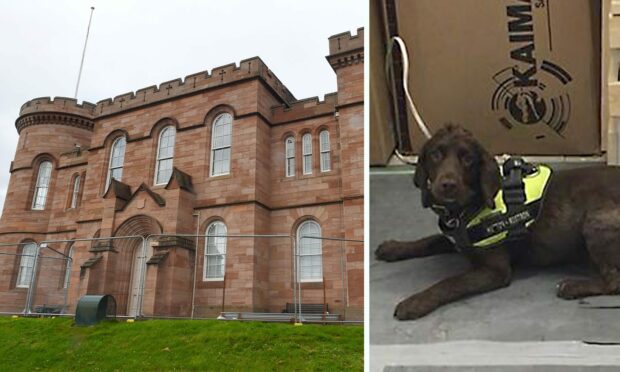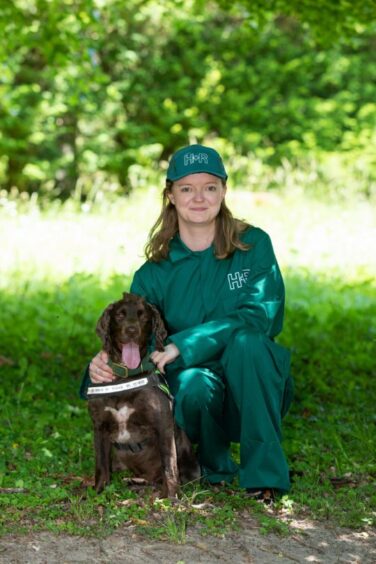The multi-million pound renovation of Inverness Castle to create a world-class tourism venue requires a variety of specialists.
One expert can claim to be the youngest at six years old.
And, as far as is known, she is the only one to be rewarded for her specialist input with a squeaky yellow toy.
Pip, a specially-trained sniffer dog, known as a rothound, travels the country where her skills for identifying dry rot in buildings are much in demand.
It’s been revealed that in the early days of the castle project, she was brought in for her ability to do a job that’s difficult, if not impossible, for humans.
Why are rothounds so effective?
Rothounds sniff the air for the living fungus, tracking down outbreaks of rot invisible to the human eye trapped behind panels, plasterwork or floorboards.
They can work in places not easily accessible by people, such as roof spaces, building voids and cellars.
It is a non-destructive detection technique which can also save time and money.
The dogs can search more than 20 rooms in an hour and can detect dry rot before it can be found by conventional means, meaning it is possible to save original timber.
Once the location of the scent source is located or narrowed down by the dog, the handler carries out an assessment of the findings using traditional surveying methods.
Stuart Mackellar, a partner with LDN Architects who are leading on the castle project, said: “The sniffer dog was used at the castle for the sole purpose of trying to pre-emptively identify the location of active dry rot.
“The only other way of really doing this would be via intrusive surveys.”
Rot-seeking dog is an important member of survey team
Pip, a Sprocker spaniel – a cross between a Springer and Cocker – is part of the specialist surveying team at Hutton+Rostron Environmental Investigations.
Such is the demand for Pip’s services in castles, stately homes and National Trust properties, the Guildford-based firm is investigating adding another dog.
Pip was re-homed from a farm in North Yorkshire and works with handler and building pathologist Isabel Mar, grand-daughter of the Countess of Mar.
It takes about six months to train a rothound. If rot is found, Pip lies on the floor and, if it’s a really bad outbreak, paws at the floor.
Training does not involve any food rewards as this can cause Pip to falsely indicate.
Instead, her reward is to be praised by her handler and play with her favourite yellow squeaky training toy.
“The routhound has an amazing ability to detect dry rot in areas we can’t usually get into”, said Isabel.
“It is very effective. I’m used to it now, but it’s still very impressive.”
New-look castle due to open in 2025
The £30 million Inverness Castle project is due to open in 2025 and become a major tourist attraction for the city which has had a castle since the 12th Century.
It is part of the Inverness and Highland City Region Deal, a joint initiative supported by up to £315 million from the UK and Scottish governments, Highland Council, Highlands and Islands Enterprise and University of the Highlands and Islands.
Much of the preparation work has been completed on the second phase of the three-phase castle project.
It includes new galleries, museum displays, shops, restaurants and cafes, and public spaces, as well as a Gaelic garden.
It will also feature a second-floor bar area and a third floor earmarked to feature the Tapestry of the Highlands and Islands.
Are you interested in all the latest news and updates from Inverness? If so, why not join our new Facebook group.



Conversation